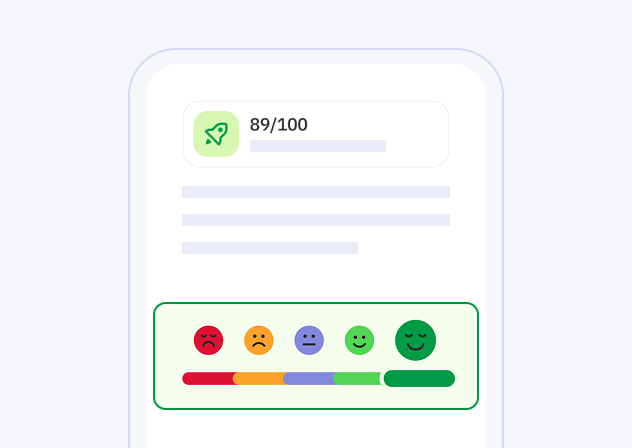The 10 Most Spoken Languages In The World
Languages connect people, cultures, and nations, creating a powerful and compelling means of communication. Today, with over 7,000 languages worldwide, understanding the most widely spoken languages can help individuals decide what language to learn and how best to communicate globally. Let's take a closer look at the world's 10 most widely spoken languages, investigating their origins, geographic distribution, and number of speakers.

The most efficient way to learn a language
Try Talkpal for freeIntroduction to English Learning Lessons
1. Mandarin Chinese – 1.1 Billion Speakers Mandarin Chinese tops the list, boasting a staggering number of speakers primarily within China. Known for its complexity and tonal nature, Mandarin serves as an official language of China, Taiwan, and Singapore, and it is becoming increasingly important in global trade and business.
Facts:
- Spoken predominantly in China and Taiwan.
- Tonal language with four basic tones.
- Complex writing system uses traditional or simplified characters.
2. English – 1.5 Billion Speakers (360 million native) English, considered the international lingua franca, connects speakers on virtually every continent. Beyond native speakers in countries like the US, the UK, Canada, and Australia, non-native speakers often learn English for international communication in business, technology, travel, and entertainment.
Facts:
- Official language in over 50 countries.
- Widely used online and in global media.
- Dominant language of international business.
3. Hindi – 600 Million Speakers Hindi serves as one of India’s official languages and is spoken by more than half a billion people. Its global influence is growing, thanks to India’s vibrant culture, film industry (Bollywood), and diaspora around the globe.
Facts:
- Primarily spoken in India.
- Hindi and Urdu speakers can largely understand each other.
- Hindi uses the Devanagari alphabet.
4. Spanish – 548 Million Speakers The vibrant and expressive Spanish language connects speakers across Europe, Central, and South America. It is the primary language in many countries such as Spain, Mexico, Colombia, and Argentina, and it is rapidly growing within the United States.
Facts:
- Second most spoken language in the United States.
- Spanish differs slightly by dialects across countries.
- Easy phonetic pronunciation for learners.
5. Arabic – 280 Million Speakers Spanning multiple continents, Arabic carries a rich historical and cultural tradition. It is the official language of over 20 countries in the Middle East and North Africa. Arabic is vital for commerce, religion (Islam), literature, and international diplomacy.
Facts:
- Written right-to-left and has a unique alphabet.
- Classic Arabic unites the Islamic world; dialects differ regionally.
- Quranic Arabic preserved over centuries.
6. French – Over 274 Million Speakers French is considered the language of romance, culture, diplomacy, and art. It is an official language in France, Canada, Belgium, Switzerland, and many African nations, making it widely prevalent across continents.
Facts:
- Official language in several international institutions.
- Widely spoken in African nations and regions.
- Language of ballet, cooking, literature, and diplomacy.
7. Bengali – 265 Million Speakers Spoken predominantly in Bangladesh and parts of India (West Bengal region), Bengali is rich in literary heritage, notably its poetry and prose. Thanks to demographical growth, Bengali remains a significant global language.
Facts:
- Primarily spoken in Bangladesh and India’s eastern states.
- Bengali alphabet is distinct, derived from Brahmic scripts.
- Celebrated literary tradition.
8. Russian – 258 Million Speakers Russian is the most spoken Slavic language worldwide. Besides Russia, it is also widely spoken across Eastern Europe and Central Asian countries, making it influential politically, culturally, and economically.
Facts:
- Spoken throughout Russia, Belarus, Kazakhstan, and others.
- Cyrillic alphabet used.
- Rich literary and historical legacy.
9. Portuguese – 234 Million Speakers Portuguese is significant not only in its country of origin, Portugal, but also across Brazil in South America—which houses the largest number of Portuguese speakers—as well as several African countries. It has continued to expand due to economic and demographic growth.
Facts:
- Official language in Brazil, Portugal, Mozambique, Angola.
- Brazil is home to the majority of Portuguese speakers.
- Well-known literary tradition.
10. Urdu – 231 Million Speakers Urdu is spoken extensively in Pakistan, northern India, and among global South Asian communities. Urdu shares linguistic similarities with Hindi, but uses a writing system combining Persian and Arabic scripts.
Facts:
- Urdu and Hindi share vocabulary but differ in scripts.
- Poetry and literature have flourished in Urdu culture.
- Widely spoken by South Asian diaspora around the world.
Conclusion
Understanding these top 10 most spoken languages facilitates cultural appreciation, travel opportunities, career advancement, and global connectivity. No matter your reason — personal growth, professional demand, or cultural curiosity — choosing to learn one of these languages can open doors and forge meaningful connections globally.
The most efficient way to learn a language
Try Talkpal for freeFrequently Asked Questions
What language has the most native speakers?
Is English the most widely used international language in the world?
Is Spanish the easiest language to learn for English speakers?
Why is Arabic considered challenging to learn?
Are Hindi and Urdu mutually understandable?
The talkpal difference

Immersive conversations
Each individual learns in a unique way. With Talkpal technology, we have the ability to examine how millions of people learn simultaneously and design the most efficient educational platforms, which can be customized for each student.

Real-time feedback
Receive immediate, personalized feedback and suggestions to accelerate your language mastery.

Personalization
Learn via methods tailored to your unique style and pace, ensuring a personalized and effective journey to fluency.







